
Loin du bruit du monde
Geraldine Bandiziol
Painting - 50 x 50 x 2 cm Painting - 19.7 x 19.7 x 0.8 inch
$812
Save your search and find it in your favorites
Save your search to find it quickly
Saved search
Your search is accessible from the favorites tab > My favorite searches
Unsaved search
A problem occurred

Painting - 50 x 50 x 2 cm Painting - 19.7 x 19.7 x 0.8 inch
$812
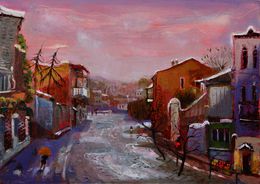




Painting - 40 x 120 x 2.5 cm Painting - 15.7 x 47.2 x 1 inch
$1,206

Painting - 50 x 50 x 0.6 cm Painting - 19.7 x 19.7 x 0.2 inch
$1,392


Painting - 200 x 145 x 1 cm Painting - 78.7 x 57.1 x 0.4 inch
$5,347




Painting - 33 x 46 x 2 cm Painting - 13 x 18.1 x 0.8 inch
$9,139
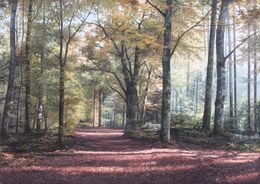
Painting - 33 x 46 x 2 cm Painting - 13 x 18.1 x 0.8 inch
$9,139

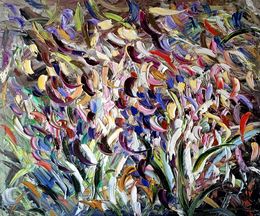


Painting - 125 x 180 x 1 cm Painting - 49.2 x 70.9 x 0.4 inch
$4,059

Painting - 113 x 143 x 2 cm Painting - 44.5 x 56.3 x 0.8 inch
$2,783

Painting - 100 x 120 x 2 cm Painting - 39.4 x 47.2 x 0.8 inch
$2,552

Painting - 100 x 120 x 2 cm Painting - 39.4 x 47.2 x 0.8 inch
$2,552

Painting - 105 x 115 x 0.1 cm Painting - 41.3 x 45.3 x 0 inch
$2,725

Painting - 120 x 140 x 0.1 cm Painting - 47.2 x 55.1 x 0 inch
$3,305

Painting - 81 x 116 x 3 cm Painting - 31.9 x 45.7 x 1.2 inch
$2,320

Painting - 150 x 200 x 0.1 cm Painting - 59.1 x 78.7 x 0 inch
$4,639
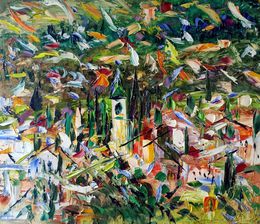
Painting - 110 x 130 x 0.1 cm Painting - 43.3 x 51.2 x 0 inch
$2,899



Painting - 33 x 46 x 2 cm Painting - 13 x 18.1 x 0.8 inch
$9,139

Painting - 33 x 46 x 2 cm Painting - 13 x 18.1 x 0.8 inch
$9,139

Painting - 38 x 55 x 2 cm Painting - 15 x 21.7 x 0.8 inch
$11,551


Painting - 40 x 50 x 2 cm Painting - 15.7 x 19.7 x 0.8 inch
$2,899

Painting - 100 x 100 x 4 cm Painting - 39.4 x 39.4 x 1.6 inch
$1,450 $1,088

Painting - 80 x 100 x 2 cm Painting - 31.5 x 39.4 x 0.8 inch
$1,392 $1,044



Painting - 100 x 150 x 4 cm Painting - 39.4 x 59.1 x 1.6 inch
$2,786 $1,950

Painting - 40 x 30 x 2 cm Painting - 15.7 x 11.8 x 0.8 inch
$986


Painting - 116 x 89 x 3 cm Painting - 45.7 x 35 x 1.2 inch
$6,959

Painting - 80 x 80 x 4 cm Painting - 31.5 x 31.5 x 1.6 inch
$2,320

Painting - 80 x 60 x 4 cm Painting - 31.5 x 23.6 x 1.6 inch
$2,088

Painting - 40 x 80 x 2 cm Painting - 15.7 x 31.5 x 0.8 inch
$1,508







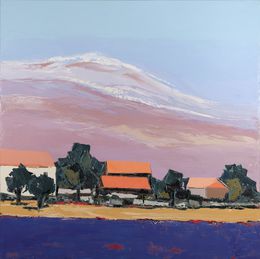


Painting - 100 x 70 x 0.5 cm Painting - 39.4 x 27.6 x 0.2 inch
$1,160

Painting - 100 x 100 x 2 cm Painting - 39.4 x 39.4 x 0.8 inch
$5,219

Painting - 28.2 x 34.5 cm Painting - 11.1 x 13.6 inch
$3,247








Painting - 100 x 80 x 2 cm Painting - 39.4 x 31.5 x 0.8 inch
$2,900 $2,320

Painting - 80 x 100 x 2 cm Painting - 31.5 x 39.4 x 0.8 inch
$2,900
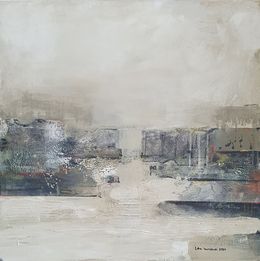



Painting - 90 x 80 x 2 cm Painting - 35.4 x 31.5 x 0.8 inch
$2,400

Painting - 60 x 80 x 2 cm Painting - 23.6 x 31.5 x 0.8 inch
$900 $765



Painting - 30 x 40 x 0.5 cm Painting - 11.8 x 15.7 x 0.2 inch
$1,276


Painting - 92 x 120 x 2 cm Painting - 36.2 x 47.2 x 0.8 inch
$11,482

Painting - 30 x 40 x 0.1 cm Painting - 11.8 x 15.7 x 0 inch
$2,320


Painting - 20 x 30 x 0.1 cm Painting - 7.9 x 11.8 x 0 inch
$1,392

Painting - 20 x 30 x 0.1 cm Painting - 7.9 x 11.8 x 0 inch
$1,508

Painting - 80 x 120 x 2.2 cm Painting - 31.5 x 47.2 x 0.9 inch
$2,320



Painting - 101.6 x 61 x 3.8 cm Painting - 40 x 24 x 1.5 inch
$1,900




Painting - 110 x 119.9 x 2.5 cm Painting - 43.3 x 47.2 x 1 inch
$4,500

Painting - 140 x 100 x 3 cm Painting - 55.1 x 39.4 x 1.2 inch
$6,843





Throughout art history, landscape painting has remained a prominent art genre, alongside portrait and history painting. The desire to represent the natural world artistically has been shared across the world. Landscape painting can be found in Western art as well as in Asian works in China and Japan.
Despite the undeniable efforts made by artists from Antiquity until modern times to promote the genre, landscape painting only became truly established in the 15th and 16th centuries, thanks in part to the Flemish painter Joachim Pantiner who invented the world landscape. For the first time in Western art, nature became a subject for a painting in and of itself, not only as part of a great scene.
Another key factor that contributed to the development of landscape painting was the influence of the Protestantism in Holland. The protestant doctrine was hostile to religious iconography and forbade the use of biblical images which were feared to encourage idolatry.
Between the 16th and 17th century a group of Flemish and Dutch artists emerged who specialized in painting pastoral scenes, still lives and various kinds of landscapes. Autumnal landscapes, snow-covered landscapes, seascapes, garden and countryside landscapes were among the most popular.
For art historians, the French painter Claude Gellée, otherwise known as le Lorrain, stands out as the landscape artist who successfully gave more prestige to the genre. Artists such as Watteau, Vermeer and El Greco also helped to increase the genre's notoriety thanks to their very individual and unique styles.
From the 19th century onwards, landscape painting no longer needed to prove itself as a genre and it became much more than just a decorative art form. The majority of painters at the time were inspired by the genre's unique techniques and the number of landscape paintings produced equalled that of portraits. Watercolor was particularly popular.
The birth of photography in the 1850s and the development of Romanticism both helped to make nature an interesting choice of subject for an artwork. What's more, the Industrial Revolution led many artists to idolize nature as a supreme source of “truth" that was being lost and corrupted in the city. William Turner and Caspar David Friedrich made nature a figurative subject in their paintings and used it to express tormented feelings of melancholy and represent emotions in their purest form. Last but not least, influenced by the Orientalist movement, many artists glorified traveling to faraway lands, in search of exoticism among mysterious foreign landscapes.
In the 19th century Claude Monet revolutionized landscape painting with the Impressionist movement and marked a turning point in the genre's development. Monet emphasized the depiction of light in his works, rather than the likeness of the subject or the precision of the brushstroke. He also helped popularize plein air painting and often took his oil paints and canvases outside to paint the scene he had in front of his eyes. The landscape painting didn't have to resemble the subject but it tried to express the colors and the individual perception of the artist. We can also think about the Starry Night painting by Van Gogh.
In the 20th century, an array of art movements reinterpreted landscape painting, each in their own individual way. During this period, we often think of Piet Mondrian's symbolic windmills or the dark and lonely houses of the Realist artist Edward Hopper. The Cubists, the Surrealists and even abstract artists have all created landscape paintings.
In short, since the 19th century landscape painting has been established as a key genre, even if the desire to represent nature in all its various forms has not always been for the same reasons.
Explore our collection of modern and contemporary paintings and discover the range of landscape paintings that we have to offer, in acrylic paint, oil paint and more. You will find works from the likes of Hervé Di Rosa, Nicolas Fropo de Habart, Olle Svanlund and René-François Grégogna.
Landscape painting in art is a depiction of a landscape, or natural scenery, using the medium of paint. Landscape paintings may include elements such as hills, trees, fields, houses, mountains, and bodies of water.
The three main types of landscape painting are representational, impressionistic and abstract. While representational landscapes are the closest to mimicking reality, impressionistic and abstract landscapes aim to portray emotions or ideas through their colors, forms and compositions.
Landscape painting has played an important role in the history of art. It not only allows artists to depict the world and natural environment that they live in, but it also allows them to transmit their values and ideas about the place that they are depicting. For example, American landscape painting in the early 19th century celebrated the patriotic ideals of the American Revolution by glorifying its industrial expansion into a mythical American wilderness.
Choose your preferences
The art is yours
The art is yours